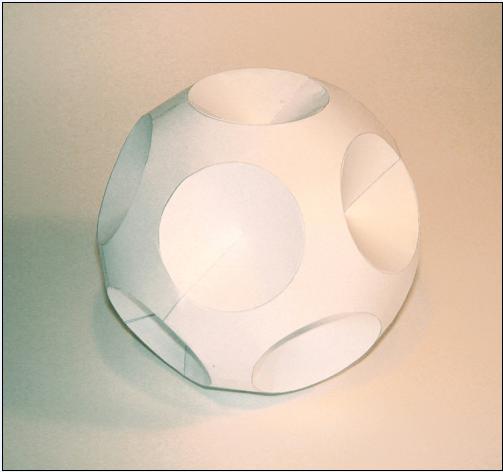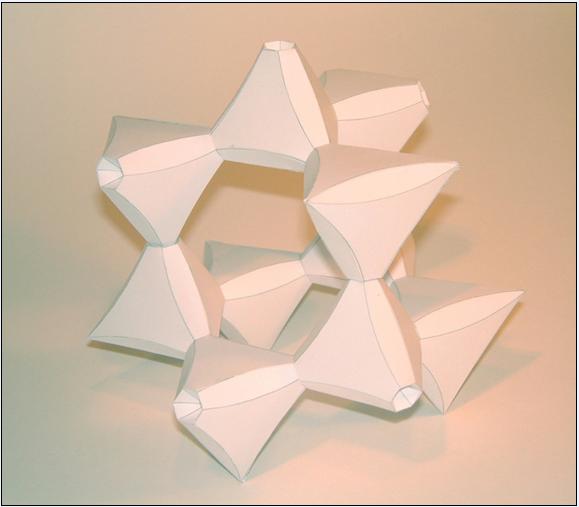Gregory Epps
"Geo-Cone (Icosahedron)"
Paper, 30cm x 30 cm x 30 cm, 2005.

"Tetra-Unit (Four Connected Network)"
Paper, 40cm x 40 cm x 40 cm, 2005.

Gregory Epps
MA Student in Industrial Design Engineering at the Royal College of Art and Imperial College London
" I have a mixed background of classical fine art painting and contemporary graphics, leading to a Spatial Arts BA, which combines sculpture and architecture. I have recently been writing a book on the subject of Fold Forms, to be published by Tarquin, which has formalized my empirical knowledge of geometry. I am currently studying an MA in Industrial Design Engineering at the Royal College of Art and Imperial College London, where I am researching curved folding for structural applications. Fold Forms are based on explorations and research into curved folding, a method of forming using sheet material. Paper or any suitable inextensible surface is scored along a curved line and folded with very different results from a normal straight line fold. Curved folds have some specific rules, so either side of a fold you will always see convex surfaces next to concave surfaces, but not two concave surfaces joined along an edge, as with cupped hands. This poses limits, but it is these limits that have led to the discovery of the forms seen here. My methodology involves starting with an idea for a possible form, then letting the shapes follow. They will often lead to a recognizable geometric conclusion, which can then be worked back into irregular configurations. Invetigations occur both in physical and CAD representations, such as Rhino, SolidWorks and Generative Components. "
looptag@hotmail.com